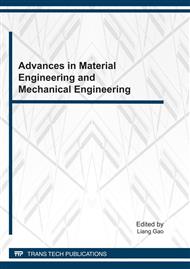p.51
p.55
p.61
p.67
p.73
p.79
p.83
p.88
p.93
Impact Resistance and Energy Absorption of Functionally Graded Cellular Structures
Abstract:
The dynamic response of functionally graded cellular structures subjected to impact of a finite mass was investigated in this paper. Compared to a cellular structure with a uniform cell size, the one with gradually changing cell sizes may improve many properties. Based on the two-dimensional random Voronoi technique, a two-dimensional topological configuration of cellular structures with a linear density-gradient in one direction was constructed by changing the cell sizes. The finite element method using ABAQUS/Explicit code was employed to investigate the energy absorption and the influence of gradient on stress wave propagation. Results show that functionally graded cellular structures studied are superior in energy absorption to the equivalent uniform cellular structures under low initial kinetic energy impacts, and the performance of such structures can be significantly improved when the density difference is enlarged. The stress levels at the impact and support ends may be reduced by introducing a gradual change of density in cellular structures when the initial impact velocity is low.
Info:
Periodical:
Pages:
73-78
Citation:
Online since:
July 2011
Authors:
Price:
Сopyright:
© 2011 Trans Tech Publications Ltd. All Rights Reserved
Share:
Citation:


